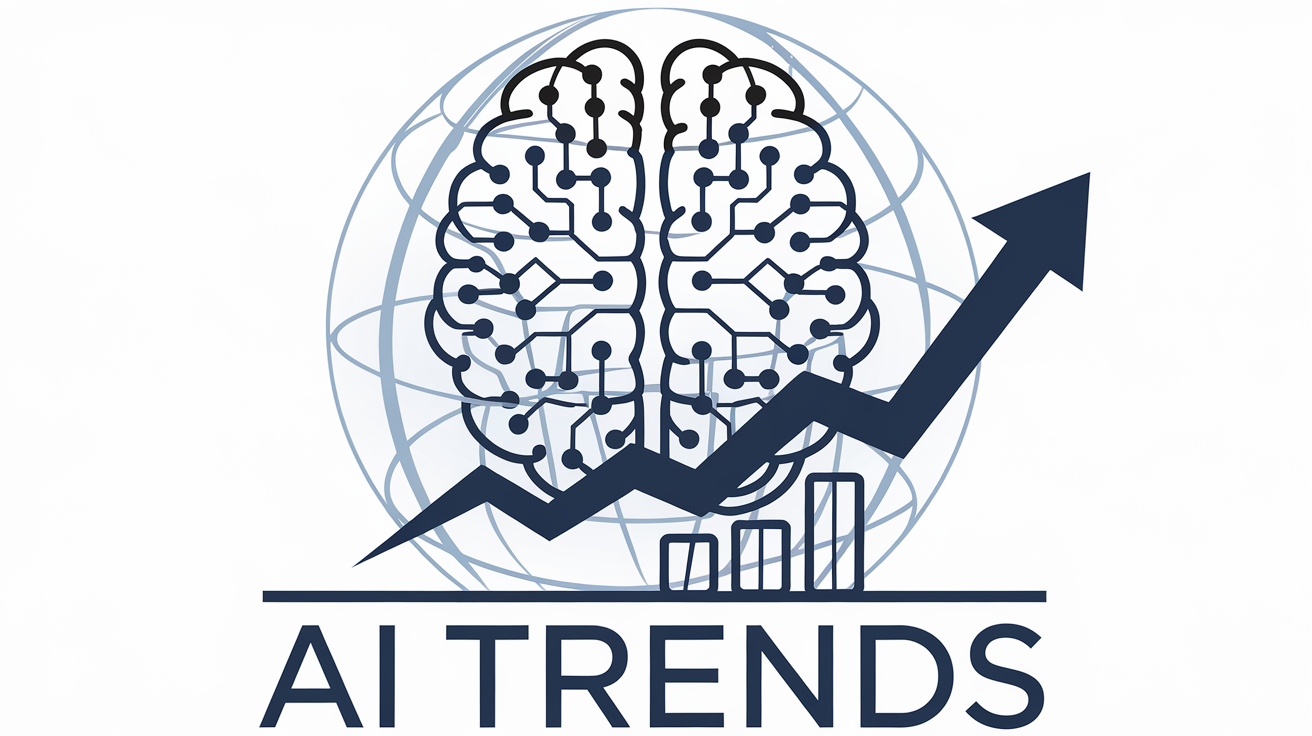Artificial intelligence is changing the game in finance. It’s making banks, insurers, and investors work smarter. AI in financial services is all about making things more efficient and innovative. Big names like JPMorgan Chase and Goldman Sachs are using financial services ai applications to better serve customers, lower risks, and increase profits.
This article will dive into seven key areas where AI is making a big impact in finance.
Table of Contents
ToggleKey Takeaways
- AI automates processes like fraud detection and loan approvals, saving billions annually.
- Machine learning models predict market trends with higher accuracy than traditional methods.
- AI chatbots handle 60%+ of customer inquiries for top banks, improving response times.
- Financial services ai applications cut operational costs by up to 30% through automation.
- Early adopters gain competitive edges in customer retention and product innovation.
The Rise of AI in Financial Services: An Industry Revolution
Since the 2008 financial crisis, ai in financial services has grown from a small part to a key player in banking. Old systems based on rules have been replaced by smart, adaptive ones powered by machine learning in banking. This change has led to better risk management and deeper customer insights.
How Artificial Intelligence Became Financial Technology’s Driving Force
After 2008, big names like JPMorgan Chase started using AI to check compliance automatically. This cut down errors by 40%. Now, fintech automation handles tasks like loan approvals, fraud detection, and managing portfolios. Machine learning helps analyze huge amounts of data to forecast market changes and what customers might want, making machine learning in banking crucial for staying ahead.
The Convergence of Big Data and Machine Learning in Modern Finance
Cloud computing and APIs make it possible to process data in real-time on a large scale. Banks like Goldman Sachs use these to link transaction histories, social media, and economic data. This setup helps create personalized loan offers and instant credit scores.
Key Statistics Showing AI’s Impact on the Financial Sector
| Metric | Statistic | Year |
|---|---|---|
| Global AI market size | $217 billion (projected) | 2027 |
| Processing efficiency gains | 30% reduction in document review time | 2023 |
| Annual cost savings | $7 billion across top 50 banks | 2022 |
Smart Customer Service: AI-Powered Chatbots and Virtual Assistants
Chatbots are changing how banks talk to customers. Chatbot technology in banking can do everything from check balances to help with loans. They work fast and accurately, thanks to financial services ai applications.
These tools understand natural language, making banking easier and faster. This means no more long waits on the phone.
24/7 Banking Support Through Intelligent Conversational Interfaces
Imagine getting account details at midnight and getting an instant answer. AI chatbots provide help any time, day or night. They handle simple tasks like fraud alerts and scheduling payments.
Banks save money, and customers don’t have to wait. For example:
- NLP algorithms understand phrases like “Pay my credit card bill”
- Automated responses solve 80% of common questions (2023 J.D. Power study)
- Real-time chat support during market hours for investment questions
How Chatbot Technology is Personalizing the Banking Experience
Today’s chatbots do more than just transactions. They look at spending habits to suggest ways to save money or warn about overdrafts. Ai in financial services helps in many ways:
| Feature | Benefit |
|---|---|
| Spending analysis | Custom budgeting tips |
| Goal tracking | Updates on savings goals like college funds or mortgages |
| Risk alerts | Instant fraud warnings |
Case Study: Major Banks Successfully Implementing AI Customer Service
Big banks have seen big improvements:
“Erica helped customers complete 1.2 million tasks monthly within 6 months of launch.”
Bank of America’s Erica handles $1.5B in transactions yearly. JPMorgan’s COIN checks legal documents much faster than people. Capital One’s Eno manages 2M+ messages monthly, cutting response time by 40%.
These examples show chatbots are key for modern banking.
Fraud Detection and Security Enhancement Through Machine Learning
Machine learning is changing how banks fight fraud. It looks at spending habits, location, and device use to catch odd activities fast. For instance, it flags big purchases from new places. This quick action cuts down losses and keeps customers safe without stopping real transactions.
- Supervised learning trains models on past fraud to spot patterns.
- Unsupervised learning finds unusual data without examples.
- Deep learning catches smart phishing attempts on online accounts.
“AI-driven fraud systems reduce false positives by analyzing 50+ variables per transaction.” – Mastercard’s 2023 Security Report
Artificial intelligence also boosts bank security. Banks like HSBC use AI to watch network traffic, stopping phishing and malware. Fintech tools check millions of transactions daily, finding issues humans might miss. Mastercard’s platform cut fraud by 25-30% for merchants, and HSBC reduced false declines by 20%.
Customers enjoy safer transactions and fewer account freezes. Banks save billions and keep trust. AI keeps improving, helping banks offer safe services without sacrificing convenience. This mix of machine learning in banking and advanced algorithms promises a safer financial future for all.
Predictive Analytics: Forecasting Market Trends and Customer Behavior
Financial institutions are using predictive analytics for finance to find hidden trends in data. They mix old transaction records, market changes, and customer talks to find patterns. This helps them make better choices for growth and new ideas.
Unlocking Insights from the Past
Machine learning models look through big datasets to find trends. They use methods like time series analysis and regression modeling. For example:
- Time series forecasting predicts stock price movements
- Customer behavior analysis identifies spending patterns
- Natural language processing uncovers sentiment in economic reports

Putting Predictions into Action
Big banks like Goldman Sachs use ai in financial services to improve their plans. Their AI systems look at real-time data to change investment plans. American Express uses predictive models to cut customer loss by 20%. Now, businesses:
- Optimize marketing campaigns
- Streamline loan approval processes
- Create dynamic pricing models
Personal Finance Forecasting
“85% of consumers trust AI-driven retirement planning tools,” reports J.D. Power.
Retail investors get help from apps like Betterment. These apps use predictive analytics to set savings goals. They look at risk and market conditions to suggest plans, making finance easy for all.
Automated Trading Algorithms and Investment Management
Automated trading algorithms are changing how we manage investments. They combine speed and precision with advanced analytics. These systems use real-time data from news, economic reports, and global markets to make trades faster than humans.
Platforms like BlackRock’s Aladdin use artificial intelligence to analyze risk and optimize portfolios. Now, retail investors can use tools once only available to institutions. This makes AI-driven strategies more accessible to everyone.
The Evolution from Rule-Based to AI-Driven Trading Systems
Early systems followed fixed rules, but today’s automated trading algorithms adapt with machine learning. For example, algorithms now use natural language processing to understand market sentiment from news and social media. Reinforcement learning helps systems improve over time, learning from past successes and failures.
How Machine Learning Optimizes Portfolio Management
Machine learning in banking helps firms like Bridgewater Associates manage risk and return. These systems analyze decades of market data to predict trends. They adjust portfolios automatically.
Neural networks find hidden patterns in stock prices or currency fluctuations. This enables decisions that are faster than traditional methods.
Accessibility of AI Trading Tools for Retail Investors
- Robo-advisors like Wealthfront and Betterment offer AI-driven portfolio management for individual investors.
- Platforms such as Robinhood integrate intelligent order routing, using AI to execute trades at optimal times.
- Mobile apps provide real-time analytics once available only to hedge funds, breaking down barriers to entry.
“AI transforms investment management by turning data into actionable insights, making sophisticated strategies accessible to everyone.”
Risk Management Revolution: How AI is Transforming Financial Safety

Financial institutions are using ai-powered risk management to handle uncertainty on a huge scale. Machine learning checks millions of transactions and market signals for risks. It finds problems like credit defaults or regulatory breaches early.
This change brings financial services ai applications into play. These systems learn, adapt, and act quicker than humans can.
| Risk Type | AI Application | Example |
|---|---|---|
| Credit Risk | Deep learning scores loan applicants | JPMorgan Chase’s COIN analyzes legal documents in seconds |
| Market Risk | Neural networks predict volatility shifts | UBS uses AI to tailor investment strategies |
| Compliance Risk | NLP scans communications for red flags | Banks automate audit trails with real-time alerts |
“AI-driven risk tools cut false positives by 40% while catching 98% of threats,” states a 2023 study by Deloitte. Such systems now handle tasks like assessing mortgage applications or detecting money laundering patterns in cross-border transactions.
But, there are still challenges. As fintech automation grows, making sure these systems are fair and clear is key. Regulators now ask for explainable algorithms to avoid biased lending or hidden biases in decision-making.
Firms also need to train staff to understand AI outputs without relying too much on “black box” models.
For consumers, this means safer loans, fewer big crashes, and quicker fraud detection. The aim is to create a financial world where technology and human oversight work together to build trust, not replace it.
Personalized Banking Experiences Through AI-Driven Insights
AI is changing how banks talk to customers. They use data on spending, goals, and life events to offer custom solutions. This makes banking feel more personal and unique for each person.
Tailoring Financial Products Based on Individual Customer Data
Banks use predictive analytics for finance to create special offers. For example, Marcus by Goldman Sachs adjusts loans based on transaction data. Bank of America’s Life Plan tool helps with saving for big events like weddings or retirement.
These systems make complex finance easier to understand. They turn data into plans that help users.
The Future of Hyper-Personalized Financial Advice
Imagine getting a budget alert when you book travel or a savings boost for holiday shopping. Chatbot technology in banking like Bank of America’s Erica already gives real-time advice. New trends include:
- Apps suggesting budget changes after big purchases
- Virtual assistants helping with tax prep or mortgage choices
- Custom dashboards tracking education funds or home buying timelines
Balancing Personalization with Privacy Concerns
While AI makes things more relevant, privacy is still crucial. Laws like GDPR and CCPA require banks to be open about data use. They must show users how their data shapes recommendations.
This balance ensures trust stays strong, even as technology advances.
Conclusion: Embracing the AI Future in Finance
AI has changed finance a lot. It has brought in chatbots and automated trading algorithms. Now, banking is faster and smarter. Tools like predictive analytics for finance help forecast trends. Meanwhile, ai-powered risk management keeps investments safe.
These changes are not just small updates. They are changing how banks work and serve their customers. They are also changing how money is managed.
Financial experts are not being replaced by AI. Instead, they are being redefined. Humans will focus on creativity, ethics, and building relationships with clients. Machines will handle the data analysis.
Banks like Goldman Sachs and JPMorgan are already using AI. They use it to give personalized advice and catch fraud. This shows that technology and human expertise can work well together.
As AI keeps getting better, leaders need to think about a few things. How do we use these tools without losing trust? How do we balance new ideas with keeping things safe?
It’s important to focus on clear strategies and ethical rules. This way, progress will help everyone. The future will combine smart technology with human insight. It will be efficient and caring at the same time.
FAQ
How is AI being used in financial services?
AI is changing financial services in big ways. It’s used for automated trading, predictive analytics, and AI-powered risk management. It also helps with chatbots in banking. These tools make customer service better, improve security, and help with smart investment choices.
What role does machine learning play in banking?
Machine learning helps banks fight fraud, score credit, and offer personalized services. It looks at lots of data to spot patterns. This helps banks make smart choices and lower risks.
Can AI improve customer service in banks?
Yes, it can! AI chatbots and virtual assistants are always ready to help. They manage accounts, answer questions, and give financial advice. They do it all based on what they know about you.
How does predictive analytics benefit financial institutions?
Predictive analytics lets banks see what’s coming in the market and what customers might do. It uses past data to help make smart business choices. It also helps customers plan their finances better.
Are there risks associated with AI in finance?
Yes, there are risks. There’s the worry about keeping data safe and AI making unfair choices. Banks need to use AI in a way that’s fair and open.
What are automated trading algorithms?
Automated trading algorithms use AI to make trades at the best times. They look at market data live. This helps manage portfolios better and makes trading easier for everyone.
How does AI help in fraud detection?
AI catches fraud by looking at how people and transactions act. It finds odd things fast. This means fewer false alarms and more real fraud caught.
What is the future of personalized banking experiences?
The future of banking is all about being super personal. AI will help make products that fit exactly what you want and need. It’s about giving value while keeping your privacy safe.
You may also like: Understanding AI: 5 Trends That Will Impact Our Lives in the Coming Years

